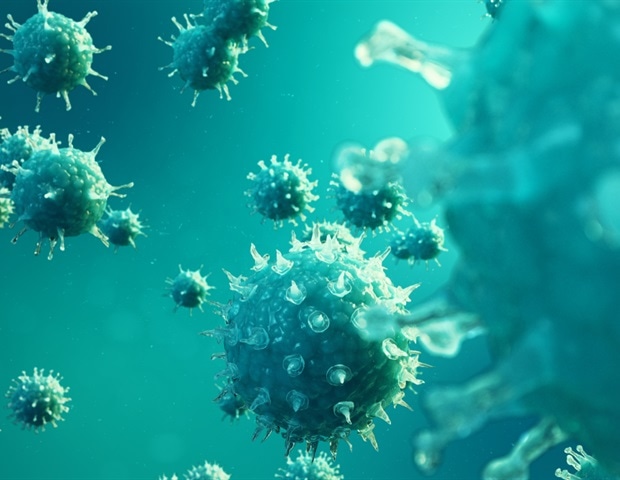Newly discovered perineural pathway enables HIV virus to redistribute throughout the body – News-Medical

Report on CNS Macrophage Trafficking and its Implications for SDG 3
Introduction: Addressing the HIV/AIDS Epidemic in Line with SDG 3
In alignment with Sustainable Development Goal 3 (Good Health and Well-being), specifically Target 3.3 which aims to end the epidemic of AIDS by 2030, new research investigates a critical barrier to HIV eradication: viral reservoirs in the Central Nervous System (CNS). A study published in The American Journal of Pathology identifies a previously unknown pathway for HIV-infected immune cells to exit the CNS. This report details the study’s findings and their profound implications for developing curative therapies and achieving global health targets.
Research Methodology
The investigation employed a multi-stage methodology to track the movement of immune cells from the CNS:
- A Simian Immunodeficiency Virus (SIV) monkey model was utilized to simulate HIV infection in humans.
- Two different colored nanoparticles were injected directly into the cerebrospinal fluid, effectively labeling CNS macrophages.
- The use of distinct colors enabled researchers to mark and differentiate macrophages at early versus late stages of infection.
- The specific routes these tagged cells used to exit the CNS were then tracked and identified.
Key Findings: A Perineural Pathway for Viral Redistribution
The research yielded several critical findings that challenge previous understandings of CNS immunology and its role in persistent HIV infection.
- Discovery of a Novel Exit Route: Researchers identified a perineural pathway, where macrophages exit the CNS by trafficking along cranial and peripheral nerves.
- Active Viral Reservoir: The study demonstrates that the CNS reservoir is not static. It actively contributes to persistent viral activity and inflammation throughout the body by redistributing infected macrophages.
- Mechanism of Persistence: This trafficking explains how HIV can be reseeded in the body, sustaining inflammation and viral presence despite treatment with antiretroviral therapy.
- Immune Cell Traffic: It was discovered that macrophages can leave the CNS via this route even under non-infection conditions, highlighting a fundamental biological pathway.
Implications for Sustainable Development Goal 3
The findings of this report have significant implications for the global effort to achieve SDG 3, Good Health and Well-being.
- Advancing SDG Target 3.3: By uncovering a key mechanism for HIV persistence, this research provides critical insights needed to develop new strategies for the complete eradication of HIV. This directly supports the goal of ending the AIDS epidemic.
- Informing New Therapies: Understanding that infected cells can travel from the brain through the peripheral nervous system will inform the development of novel treatments that can target these specific pathways, moving beyond viral suppression to a functional cure.
- Strengthening Global Health: The study underscores the importance of the connection between the central and peripheral nervous systems in immunity. This knowledge is vital for tackling persistent viral diseases and improving long-term health outcomes for millions of people living with HIV, a core objective of SDG 3.
Conclusion
This research successfully identifies a perineural pathway for macrophage trafficking out of the Central Nervous System, revealing how the CNS acts as an active reservoir for HIV. These findings are a crucial step forward in the global challenge to eradicate HIV. By providing a new therapeutic target, this work directly contributes to the ambitious health objectives outlined in the Sustainable Development Goals, particularly the commitment to ending the AIDS epidemic and ensuring healthy lives for all.
Analysis of Sustainable Development Goals in the Article
1. Which SDGs are addressed or connected to the issues highlighted in the article?
-
SDG 3: Good Health and Well-being
The article directly addresses SDG 3, which aims to ensure healthy lives and promote well-being for all at all ages. The research focuses on understanding the Human Immunodeficiency Virus (HIV), a major global health issue. By investigating how HIV persists in the body despite treatment, the study contributes to the broader effort of combating communicable diseases, a key component of this goal. The article’s core subject is medical research aimed at improving health outcomes for people living with HIV.
2. What specific targets under those SDGs can be identified based on the article’s content?
-
Target 3.3: By 2030, end the epidemics of AIDS, tuberculosis, malaria and neglected tropical diseases and combat hepatitis, water-borne diseases and other communicable diseases.
This target is directly relevant as the research is focused on HIV. The article explains that the Central Nervous System (CNS) is a “critical reservoir for viruses such as HIV” and that immune cells (macrophages) can traffic out of the CNS, “reseeding HIV and sustaining inflammation despite treatment.” Understanding this mechanism is a crucial step toward developing more effective treatments. The study’s stated purpose is to “inform new strategies in the challenge of eradicating HIV,” which aligns perfectly with the goal of ending the AIDS epidemic.
-
Target 3.b: Support the research and development of vaccines and medicines for the communicable and non-communicable diseases that primarily affect developing countries, provide access to affordable essential medicines and vaccines…
The entire article describes a fundamental scientific study published in The American Journal of Pathology. This research on the “dynamics of SIV-infected macrophage trafficking” is a clear example of the research and development (R&D) necessary to create new medicines and therapies. The conclusion that the findings “provide critical insights that will inform new strategies” directly links this work to the development of future treatments aimed at eradicating HIV, a communicable disease with a global impact.
3. Are there any indicators mentioned or implied in the article that can be used to measure progress towards the identified targets?
-
Implied Indicator for Target 3.3 (related to Indicator 3.3.1: Number of new HIV infections per 1,000 uninfected population):
The article does not provide statistical data on new HIV infections. However, it discusses the biological mechanism of “persistent viral activity” and the “reseeding [of] HIV” throughout the body from the CNS reservoir. The research aims to find ways to stop this process. By contributing to strategies for HIV eradication, the research is an upstream effort aimed at ultimately reducing and eliminating the virus in infected individuals, which is a prerequisite for preventing transmission and reducing the number of new infections at the population level. Therefore, the study of “persistent viral activity” is an implied measure related to the biological source of new infections.
-
Implied Indicator for Target 3.b (related to medical research and development):
The existence and publication of this study serve as an implicit indicator of progress in medical research for HIV. The article itself, detailing a novel discovery about a “perineural pathway” for HIV redistribution, represents a tangible output of R&D efforts. The conclusion that the findings “provide critical insights that will inform new strategies in the challenge of eradicating HIV” signifies a contribution to the body of scientific knowledge required to develop new medicines, which is a core component of Target 3.b.
4. Table of SDGs, Targets, and Indicators
| SDGs | Targets | Indicators (Identified or Implied in the Article) |
|---|---|---|
| SDG 3: Good Health and Well-being | Target 3.3: End the epidemics of AIDS… and other communicable diseases. | Implied: The study of the biological mechanisms of “persistent viral activity” and the “reseeding [of] HIV” from the CNS reservoir. This research is a precursor to developing interventions that would ultimately impact Indicator 3.3.1 (Number of new HIV infections). |
| SDG 3: Good Health and Well-being | Target 3.b: Support the research and development of vaccines and medicines for communicable… diseases. | Implied: The publication of the research itself in The American Journal of Pathology. The article’s findings, which “provide critical insights that will inform new strategies in the challenge of eradicating HIV,” represent a measurable output of R&D activity aimed at developing new medicines. |
Source: news-medical.net
What is Your Reaction?
 Like
0
Like
0
 Dislike
0
Dislike
0
 Love
0
Love
0
 Funny
0
Funny
0
 Angry
0
Angry
0
 Sad
0
Sad
0
 Wow
0
Wow
0
















































:focal(1500,1000)/https://media.globalcitizen.org/a6/9a/a69a4720-d8a1-4715-b596-18738d03c05c/rotary_polio_hero_image.jpg?#)







/countries/sri-lanka/photo-credit---dmc-sri-lanka.tmb-1200v.jpg?sfvrsn=dc298bcc_1#)

















